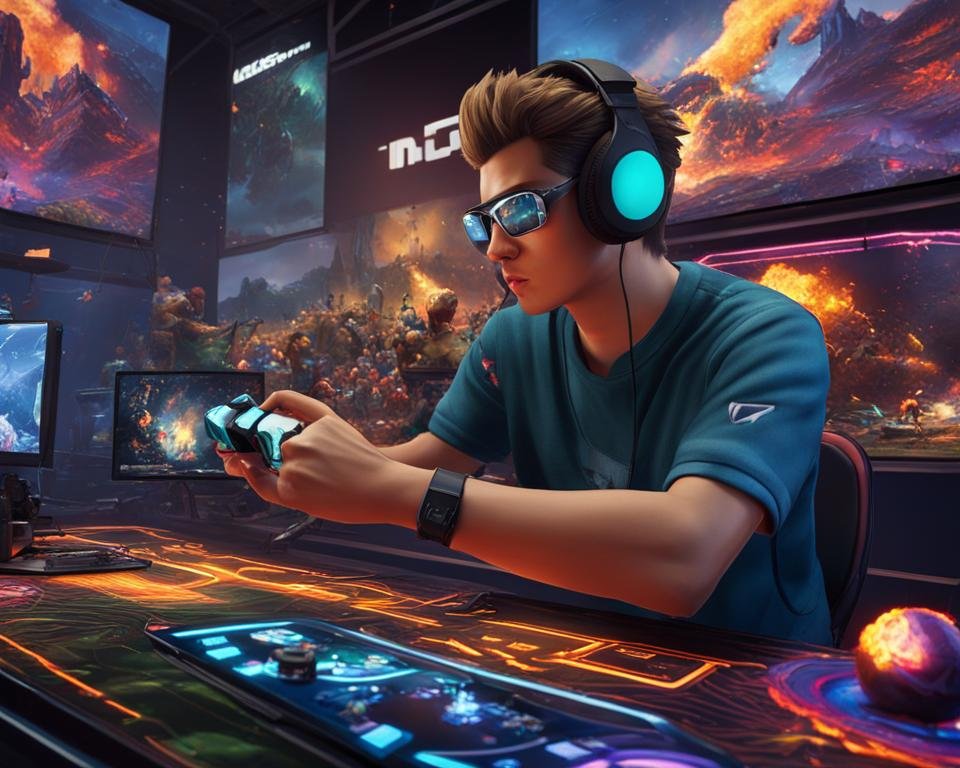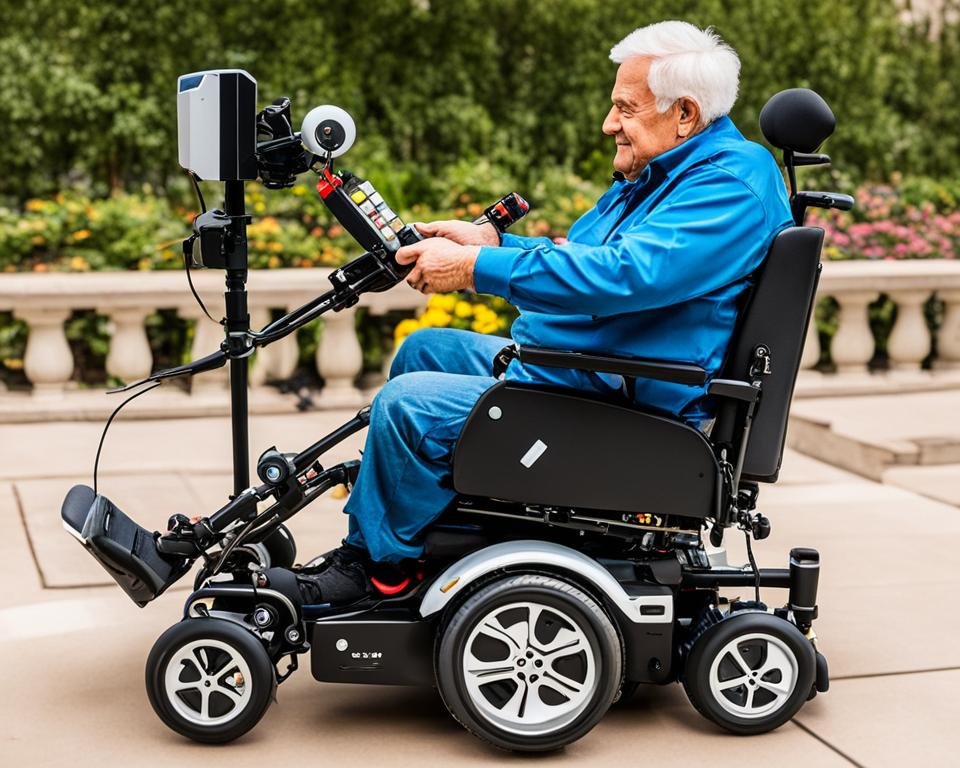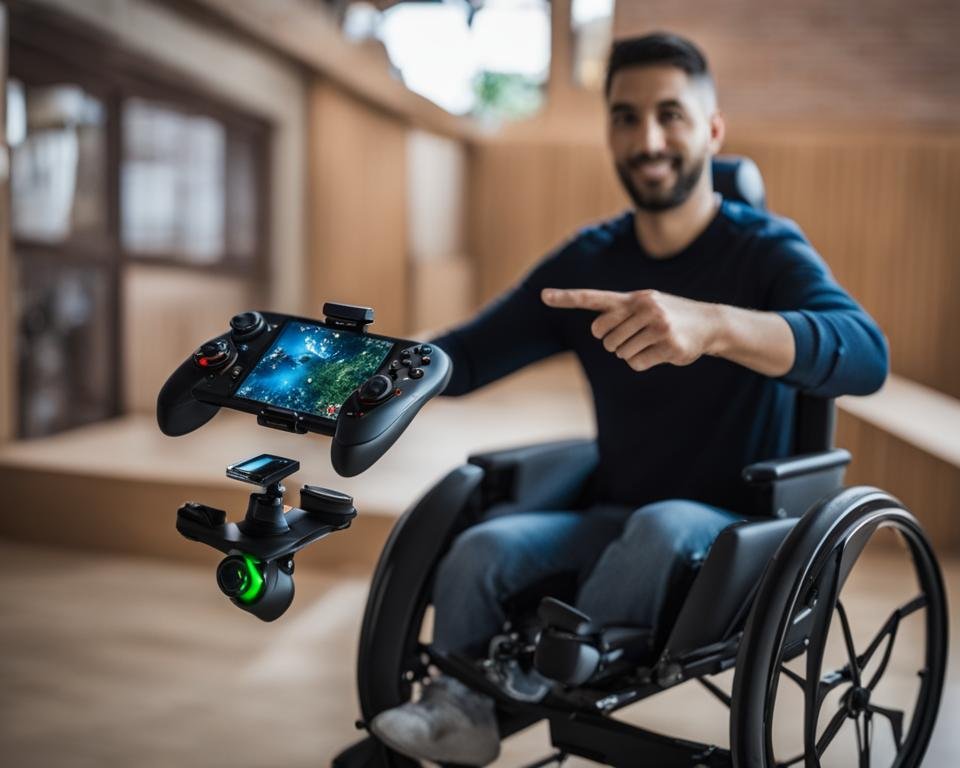Joysticks are versatile input devices that have been used in various industries to enhance interactivity and precision. Initially designed for gaming, joysticks have become indispensable in aviation, virtual reality, robotics, music, and assistive technology, among others.
In gaming, joysticks provide accurate and responsive control, adding to the immersive experience of playing flight simulators, racing games, and space exploration games, among others. Additionally, joysticks are heavily utilized in aviation as an essential component of flight controls in aircraft ranging from commercial planes to military jets.
With virtual reality becoming increasingly popular, joysticks have become an integral part of this field, facilitating motion control in VR gaming and enhancing the overall sensory experience.
Joysticks play a crucial role in the robotics industry since they provide precise control of robotic arms. They also find applications in controlling heavy machinery and equipment in industries such as construction and manufacturing, making them indispensable in these fields.
Assistive technology has made the lives of people with disabilities easier by enabling them to interact with computers and other assistive devices through the use of joysticks.
Finally, joysticks have found their way into the music and DJing industry as MIDI controllers, facilitating enhanced sound manipulation, and allowing musicians and DJs to express their creativity.
Key Takeaways:
- Joysticks are widely used in diverse applications, such as gaming, aviation, virtual reality, robotics, music, and assistive technology.
- They provide precise and responsive control, enhancing the overall user experience.
- They play a vital role in various industries, including aviation, construction, and manufacturing.
- Joysticks facilitate enhanced sound manipulation in the music and DJing industry.
- Assistive technology has made tremendous strides in accessibility and usability for people with disabilities.
Gaming Uses Of Joystick
Joysticks have become an integral part of the gaming experience. With their ability to provide precise control, gamers can immerse themselves in various genres such as flight simulators, racing games, and space exploration games. Joysticks offer gamers a level of control over their virtual environment that is difficult to replicate using traditional controllers.
In flight simulator games, joysticks allow gamers to experience the thrill of flying as if they were piloting a real plane. With the ability to adjust pitch, yaw, and roll at the slightest movement, gamers can feel like true aviators. Racing games are another genre where joysticks are widely used. The joystick’s handle provides gamers with realistic feedback as they navigate tracks with precision and accuracy.
Another genre where joysticks excel is space exploration games. With the vastness of space and the complexity of flying a spaceship, joysticks offer the precise control needed for players to explore and navigate with ease. The immersive experiences provided by joysticks in gaming allow players to lose themselves in the game and feel like they are part of the action.

Joystick Applications In Aviation
Joysticks have a critical role in aviation as flight controls for a variety of aircraft, including commercial airliners, military jets, and helicopters. The use of joysticks provides pilots with precise control over the aircraft’s movements, offering a more intuitive and responsive alternative to traditional yokes and knobs.
In addition to their operational use in actual flights, joysticks are also utilized in pilot training for realistic simulations. Flight simulators allow pilots to train for a wide range of flight conditions, such as turbulence and emergency situations, without endangering themselves or others. Joysticks enhance the training experience, providing a more accurate simulation of actual flight controls and maneuvers.
As aviation continues to evolve, the importance of joystick applications will only continue to grow. From enhancing the safety of flights to improving pilot training, joysticks play a vital role in aviation technology.

Joysticks In Virtual Reality (VR)
Virtual Reality (VR) gaming has taken the gaming experience to the next level, thanks to the motion control enabled by joysticks. With the joystick, gamers can seamlessly interact with virtual environments, giving them an immersive gaming experience. Joysticks provide a smooth motion and tactile feedback, which is essential for a more realistic experience.
Some of the popular VR systems that utilize joysticks include Oculus Rift, PlayStation VR, and HTC Vive. With these systems, players can have an unprecedented interaction with the virtual world, challenging not only their imagination but their physical abilities as well.
If you haven’t yet tried joysticks in VR gaming, you are missing out on the fun.

Industrial Applications Of Joystick
Joysticks are not limited to gaming and aviation, as they also find their use in various industrial applications, including robotics and heavy machinery control. In the field of robotics, joysticks provide precise control and manipulation of mechanical arms, allowing for delicate tasks to be performed seamlessly. The use of joysticks in controlling heavy machinery and equipment proves to be efficient in industries such as construction and manufacturing, where complex machinery and processes require accurate manipulation.

Joysticks have revolutionized the industrial sector by providing enhanced control and increased efficiency in various industrial processes. The use of joysticks in robotics and heavy machinery control not only makes complex tasks easier but also ensures the safety of the individuals operating them.
Assistive Technology Joystick Applications
Joysticks have proven to be an essential tool in the field of assistive technology, providing accessibility and independence to individuals with disabilities. Joysticks are employed to control computers, wheelchairs, and other assistive devices, aiding these individuals to navigate their environment with ease.
Assistive technology joystick applications are diverse, ranging from simple mouse control to more complex interactions with devices. Joysticks are designed to accommodate various levels of mobility and dexterity, ensuring that individuals with disabilities can control devices with ease.
The use of joysticks in assistive technology has made a significant impact on the lives of many people with disabilities, providing them with the opportunity to engage more fully with the world around them. Organizations such as the Rehabilitation Engineering and Assistive Technology Society of North America (RESNA) specialize in the development and advancement of assistive technology and have been instrumental in the research and implementation of joysticks in this field.
If you or someone you know has a disability, considering the use of a joystick in assistive technology can provide a newfound sense of independence and allow for more accessible and fulfilling experiences.

Joystick Use In Music and DJing
Joysticks are not only limited to gaming and aviation but are also widely used in the music and DJing industry. They are an essential component of MIDI controllers, which allow musicians and DJs to manipulate sound effects, synthesizers, and other music equipment.
Joysticks provide an intuitive and tactile way for musicians to control and manipulate their music. They allow for precise control over a wide range of parameters, including pitch, volume, and modulation. Many MIDI controllers on the market today feature joysticks, which have become increasingly popular due to their versatility and ease of use.
One of the primary benefits of using a joystick in music production is the ability to perform complex sound manipulation with ease. Musicians can use the joystick to create unique sounds and effects that would be difficult or impossible to achieve with traditional knobs and sliders.
Joysticks are also commonly used in DJing to control the crossfader and other effects. The tactile input of a joystick allows DJs to make quick and precise adjustments to the music, enhancing their performance and keeping the crowd engaged.
In addition to traditional music equipment, joysticks are also used in other areas of music production, such as virtual instruments and software. They provide an intuitive way for musicians to control virtual instruments and manipulate digital audio signals.
Overall, joysticks have become a popular tool in the music and DJing industry due to their versatility, precision, and ease of use. They allow musicians to create unique sounds and effects, making them an essential component of any MIDI controller.




